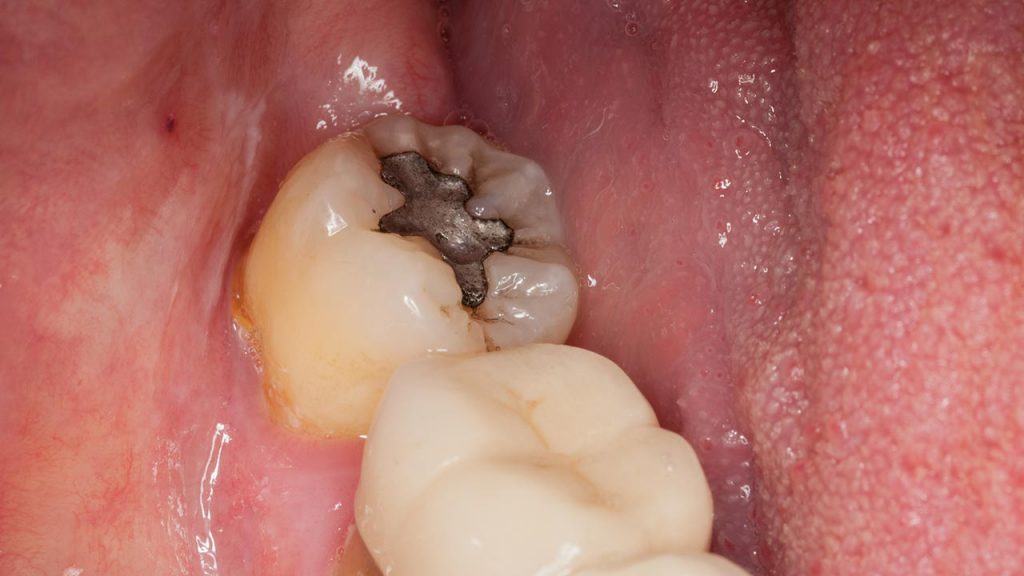Myths have surrounded amalgams since more than 200 years ago, when the first use of this alloy was reported in France in 1823. In order to clarify the doubts that many patients and dentists have every day about this filling material used to restore masticatory functions and the stability of teeth affected by caries, the metallurgical engineer and Technical Coordinator of Medical Devices at New Stetic, Gabriel Jaime Gómez Mejía, will unveil the mystery of amalgam step by step. Let’s see what he has to say about it!
Is amalgam toxic?
No. Let us first clarify that there is a difference between amalgam toxicity and mercury toxicity. Amalgams are all those mixtures of powdered metals such as silver, tin, copper and zinc, among others, bound through metallic or elemental mercury (Hg), whose toxic effects on the environment and on people represent a latent fear in the field of large-scale mining, batteries or tuna consumption, among others. However, as far as oral health is concerned, scientific literature and international organizations such as the American Dental Association (ADA), the FDI International Dental Federation (FDI), the U.S. Food and Drug Administration (FDA) and the World Health Organization ratify the safety and effectiveness of this material for patients in general, with the exception of children under 6 years of age and nursing mothers. The reason for the biocompatibility of amalgam lies in the fact that mercury, when combined with the dental alloy, forms a compound with physicochemical and toxicological properties that are radically different from those of mercury as an individual element.
Is it still marketed?
Of course it is. Currently, not only are different types of amalgam manufactured and distributed, but in Colombia it is a material widely used in the provision of oral health services through IPSs. In fact, in New Stetic we have several alloys for amalgam with FDA approved use in the United States such as Nu Alloy, High Alloy, Un Alloy Active or Un Alloy 40, which you can find on our website. According to MUTIS, Martha et al (2011) “some cost-effectiveness reports in Latin America have shown that the use of composite resins instead of amalgam has increased the cost of dental services by more than 50%, which generates in an important group of health economists and in large sectors of scientific societies and public health professionals, a very discreet position, and in other cases, an advocate of the use of this dental material”.
Is light-curing resin a better material than amalgam?
That varies. It is worth expressing that there is no ideal restorative dental material, since all of them have their advantages and disadvantages in some way, so their choice is directly linked to the specific needs of each patient. Although factors such as esthetics and the worldwide concern for the environmental management of mercury have led to the increasing use of light-curing resins as restorative material -mainly in private dental practice- amalgam still plays a predominant role in state health services, not only in Colombia but also in the world.
If I have amalgams in one or more teeth, is it necessary to remove them?
It is neither necessary nor recommended when the amalgam does not present any kind of functional or clinical problem for the patient. Removing a clinically functional amalgam and replacing it with another material involves several difficulties such as exposing the patient to mercury vapors and amalgam particles when the amalgam is not properly removed, sacrificing healthy tissue in the cavity preparation, the possibility of the patient returning in a short time due to failures in the new restoration or the need for a much more expensive restorative treatment. If the patient definitely wants to have his amalgams removed, it is a priority that he knows from the dentist the possible consequences of such a procedure.
When to use amalgam?
It depends. It is not for nothing that amalgam is the most researched and used restorative material in the world. Throughout its history it has undergone different developments in its composition, which allowed improving its physicochemical, mechanical and clinical performance properties. Due to its characteristics, amalgam is currently used for the restoration of class I and II cavities in posterior teeth (molars and premolars). And although it is true that for the restoration of anterior teeth the most used and recommended material is light-curing resins, the use of amalgam should not be ruled out under any circumstances.
What are the advantages of using amalgam?
The use of this dental alloy has four major benefits over other similar materials: greater resistance to compression and wear, durability in the mouth (up to 20 years or more depending on the care given), lower cost and simple application technique. It should not be forgotten that the clinical success of a restoration with amalgam depends mainly on the quality of the material and the professional’s technique; and while these two aspects are covered, it only remains for the patient to have adequate eating habits and oral hygiene, together with a regular visit to the dentist.
Remember that the decision to use or not to use amalgam depends on several factors such as the dentist’s academic training, the profitability for his private practice of using resins instead of amalgams, the patient’s lack of knowledge and the way the concept of esthetics is handled. Therefore, in order to select the best option and avoid the pressure exerted by commercial trends, it is necessary to know the pros and cons of each material to provide criteria at the time of purchase. In New Stetic we offer you the best quality restorative materials as varied as tastes, so that you can choose the one that best suits your needs. What are you waiting for?


